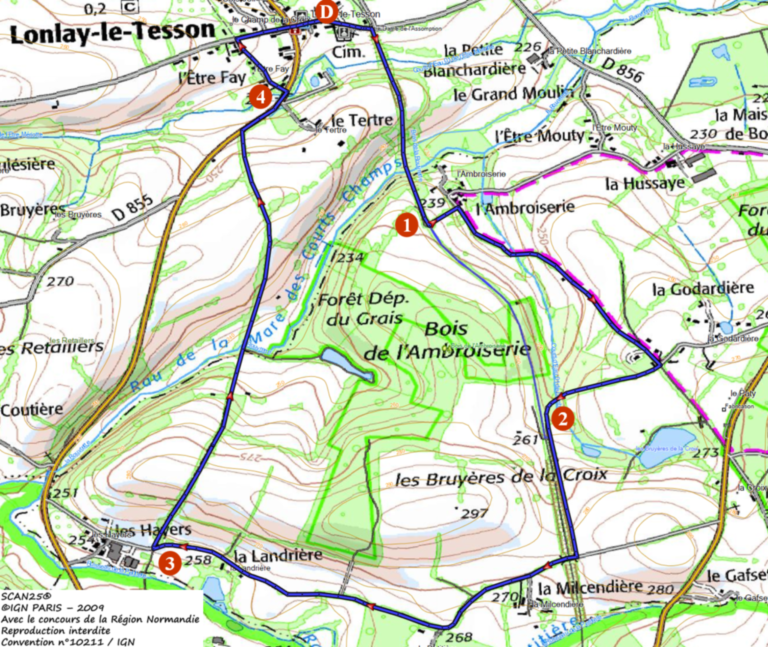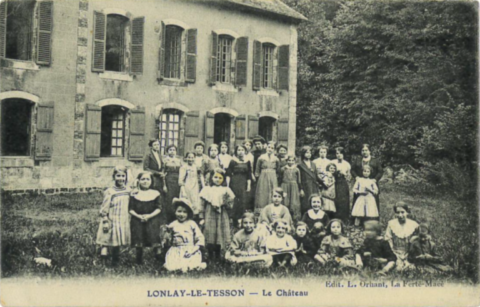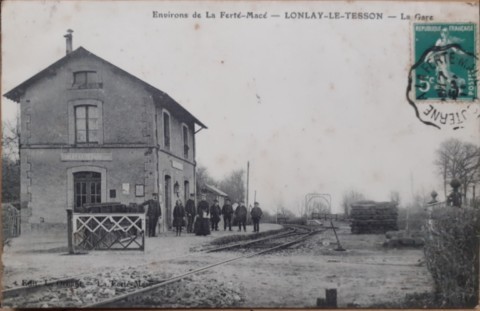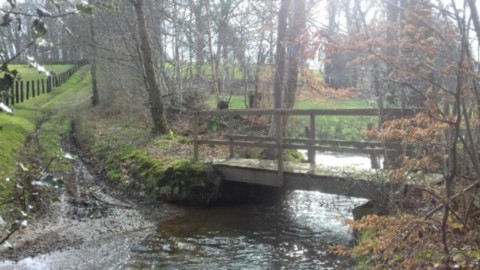Lonlay Le Tesson
Signposting L < download the sheet >
Duration : 2h30 -
Distance : 11,4 km -
Height range : 120 m -
Bridlepaths : 7,2 km -
Marked footpaths : in progress -
Difficulties : average -
A part of the lane can be damp.
Mairie : 02 33 37 14 80
description
Park near the church.
Walk past the “ mairie ».
At the Stop sign, cross the D20.
Be careful and continue straight ahead on the D218 towards La Sauvagère.
Take the first hollow lane on the right.
It is situated in the “L’Etre-Fay” hamlet.
At the end of the lane, turn left onto the road.After the hamlet of “La Pichonnière”, take the small road on the left towards “La Gouberdière”.
Walk straight ahead in the lane.
When the lane opens onto a wider lane, turn right (do not take the private lane which is parallel to the one which you came from which is often closed by a metal gate).After about 100 metres, when you have reached plot 76, go straight onto the lane which goes down into the wood.
Follow this lane for about 1km. This lane is slightly uneven.At the end of the lane, turn right into a wide lane with a stony surface. Follow the sign : “ Circuit n°11 liaison B vers n°7”.
After the ”Grand Bois Mancelet”, take the lane on the left “circuit n°11”, before the “Etre Fleury” house.
Continue straight ahead on the tarred road.
Cross the road. Be careful and continue straight into the lane.
Cross the D20 carefully.
Continue in the lane across the road.At the T junction, turn right into the wide lane “Creuse rue”.
Turn right (D856) on to the tarred road.After about 500m, take the first road on your right towards Lonlay Le Tesson and walk back to the car park.
The cob
It is used to fill half-timbered walls.
It has been used as a natural cement since the Neolithic period.
In the past, people used the materials they could find locally to build their houses. In this area, there were no surface stones.
The cob is a good heat and sound insulator.
It is a healthy material.
This building technique which had been discarded for decades is now used again.







